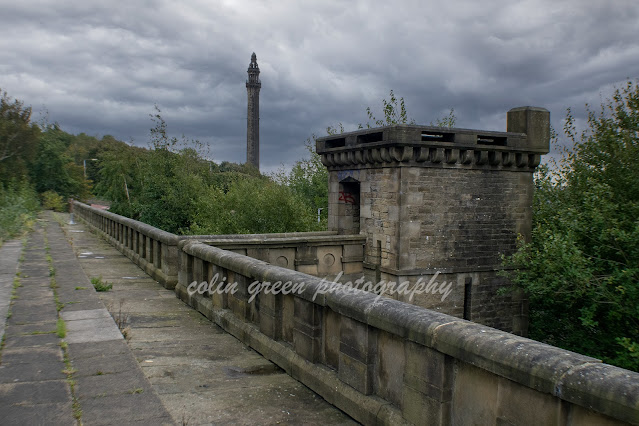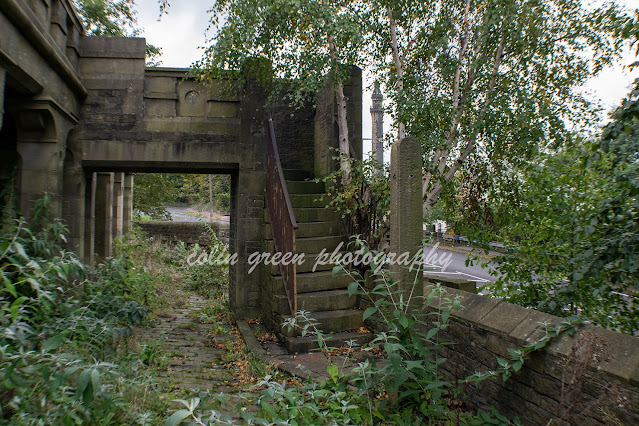There are places that whisper stories of the past, their stones imbued with the echoes of lives lived and forgotten. Wainhouse Terrace in King Cross, Halifax, is one such place. Tucked away near the impressive Wainhouse Tower, this intriguing structure, often overlooked, offers a captivating glimpse into Victorian ambition and nature's relentless embrace.
Walking along what was once a grand promenade, you can't help but feel a sense of serene melancholy. The sturdy stone walls, once meticulously maintained, now bear the marks of time and weather. Overgrown pathways, with creeping vines and wild grasses reclaiming the carefully laid bricks, lead you deeper into its forgotten corridors. Sunlight filters through the leafy canopy, casting dappled shadows on decaying facades and hinting at the structure's former glory.
The architectural details are still striking – the robust columns, arched doorways, and intricate stonework speak of a time when craftsmanship was paramount. Yet, juxtaposed against this solid construction is the pervasive sense of decay. Broken flagstones lie scattered, testament to the years of neglect. Staircases, some spiralling into hidden depths, beckon the curious, while others lead to nowhere, their purpose long since lost to the overgrowth.
Perhaps the most poignant aspect is the way nature has intertwined itself with the man-made. Trees sprout from unexpected crevices, their roots slowly but surely asserting their dominance. Greenery cascades over walls and through empty window frames, transforming the rigid lines of the architecture into a softer, wilder landscape. It's a powerful reminder of nature's ability to reclaim, to soften edges, and to eventually, gracefully consume.
Even with its current state of disrepair, Wainhouse Terrace holds a unique allure for those drawn to urban exploration, forgotten places, and the beauty of decay. It’s a photographer's dream, with its dramatic contrasts of light and shadow, the starkness of stone against the vibrancy of green. And in the distance, often peering through the trees, the iconic Wainhouse Tower stands as a stoic sentinel, a silent witness to the passage of time and the changing fortunes of its smaller, more intimate neighbour.
Wainhouse Terrace isn't just a collection of old buildings; it's a testament to history, a canvas for nature's artistry, and a place that invites contemplation about the transient nature of human endeavours. If you find yourself in Halifax, venture off the beaten path and discover the quiet, captivating beauty of this forgotten gem. You might just find yourself lost in its echoes, and all the richer for the experience.
I took these pictures on the 3rd October 2017 with a Nikon d3300, clicking on any of them should open a link in another window to my Colin Green Photography store on Zazzle.
Please take a moment to share this post, follow me on social media, and explore my work on Clickasnap and Photo4Me using the links below. Your support means a lot!
All the pictures remain the copyright of Colin Green.























































